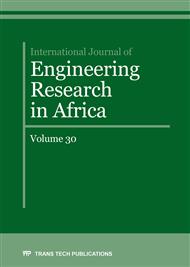p.1
p.11
p.23
p.39
p.49
p.65
p.85
p.94
p.100
Development of a Computer Aided Beam Deflection Analysis (CABDA) Program for Simply Supported Loaded Beams
Abstract:
Beam-like members such as shafts, levers, frame components, beam structures, etc. are regularly designed and constructed in the field of mechanical and civil engineering. It is pertinent to know the structural integrity of the design before construction or fabrication. Beam deflection and stress calculations can be cumbersome and results from commercial simulation packages are not devoid of truncation and/or round-off errors because they are based on numerical schemes. To reduce or eliminate these issues, a computational tool, CABDA, has been designed and developed on matlab. The algorithm is based on analytic equations of beam deflection and bending stress theories; a design flow chart and graphic user interface were done to implement the algorithm. Experiments and simulations have been carried out for steel and brass rectangular beams which were compared with results obtained from CABDA for the same beam model. Average deflection errors recorded for steel beam are-0.4 and-0.015; for brass beam are-0.69 and-0.1 for experiment and simulation respectively. Average bending stress error recorded is-0.19 for simulation. It is observable that simulation results compare closely but CABDA gives exact results and therefore is very appropriate for simple beam problems.
Info:
Periodical:
Pages:
23-38
Citation:
Online since:
May 2017
Keywords:
Price:
Сopyright:
© 2017 Trans Tech Publications Ltd. All Rights Reserved
Share:
Citation:


